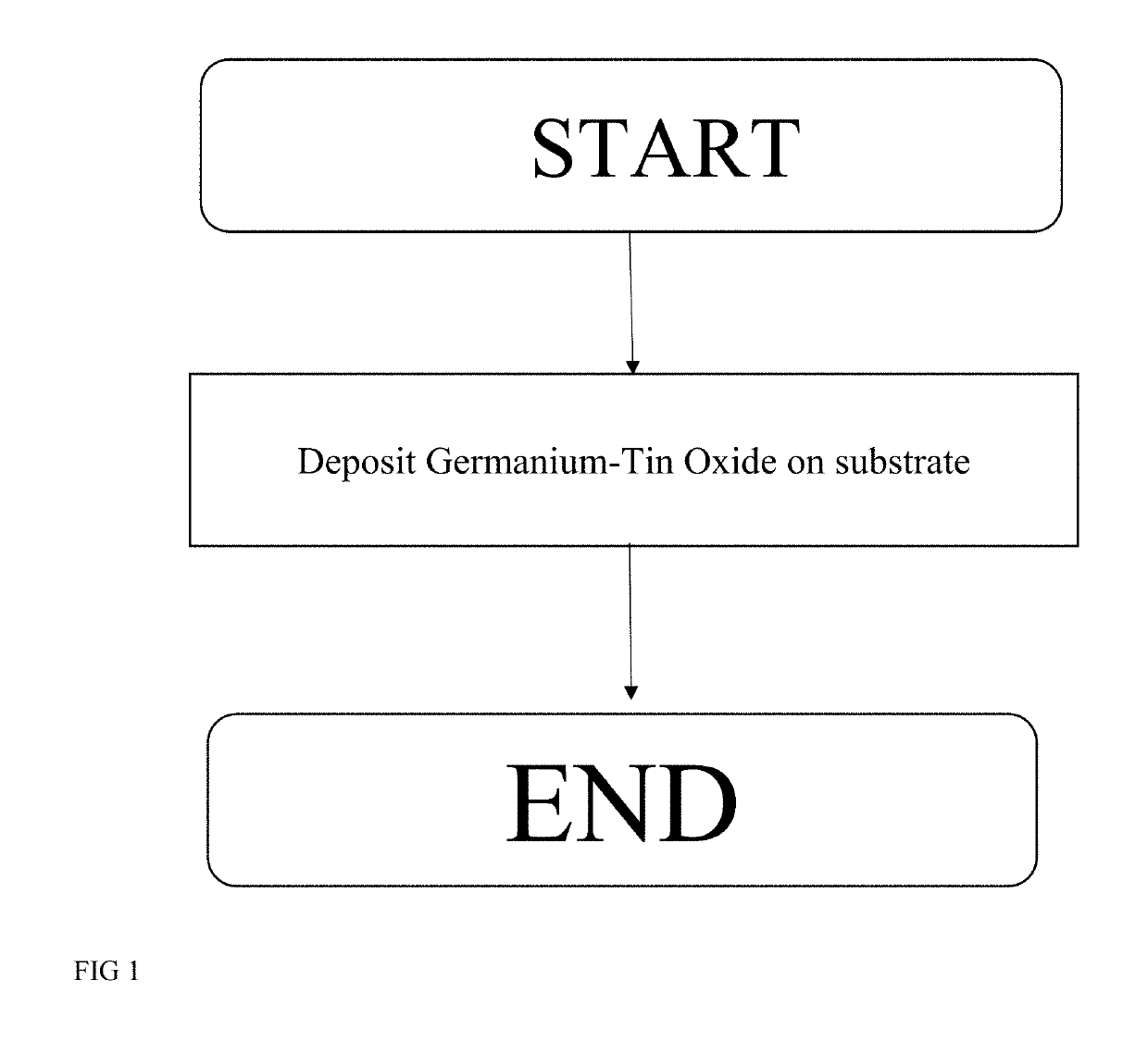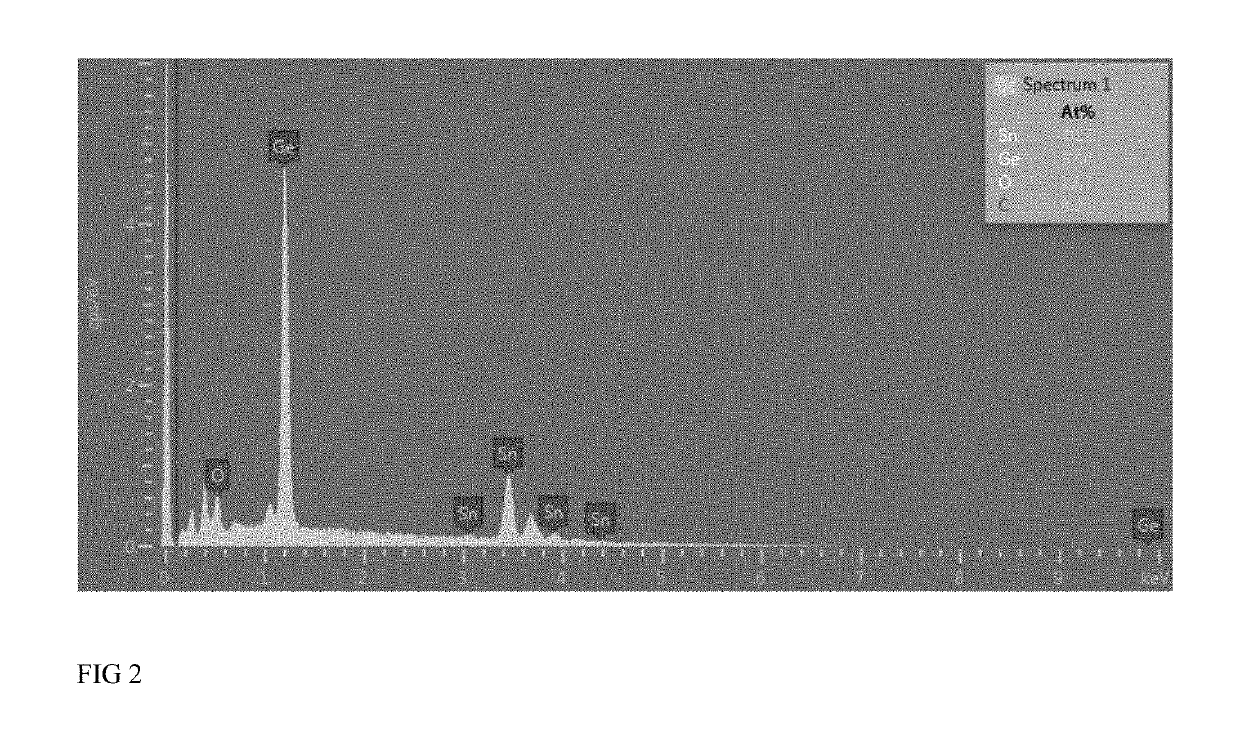Germanium tin oxide thin films for uncooled infrared detectors
a technology of infrared detector and tin oxide, which is applied in the direction of optical radiation measurement, instruments, measurement devices, etc., can solve the problems of heat loss through radiation, heat loss through conduction/convection through the atmosphere surrounding the detector thermometer, and undesirable effects, and achieve low noise value, stable and high reproducibility properties, and high tcr value
- Summary
- Abstract
- Description
- Claims
- Application Information
AI Technical Summary
Benefits of technology
Problems solved by technology
Method used
Image
Examples
Embodiment Construction
[0046]We present here the microbolometer elements and methods for forming the same. The sensing layer of microbolometer is fabricated using various atomic compositions of Germanium, Tin, and Oxygen to form an alloy of germanium-tin-oxide (Ge—Sn—O). The variation in atomic composition in the alloy of Ge—Sn—O will allow the materials' properties to be varied. The variation of the atomic composition in Ge—Sn—O alloy will vary the fundamental material properties such as activation energy and carrier mobility. This way the key microbolometer device figures of merits such as resistivity, TCR, responsivity, absorption in IR region of interest, noise, detectivity, noise equivalent temperature difference are varied and optimized for better device performance.
[0047]Variation and optimization of atomic composition in the alloy of Ge—Sn—O allow us to increase the room temperature TCR to a value which is significantly higher than the current reported values (from −2% / k to −5% / k). TCR is one of t...
PUM
 Login to View More
Login to View More Abstract
Description
Claims
Application Information
 Login to View More
Login to View More - R&D
- Intellectual Property
- Life Sciences
- Materials
- Tech Scout
- Unparalleled Data Quality
- Higher Quality Content
- 60% Fewer Hallucinations
Browse by: Latest US Patents, China's latest patents, Technical Efficacy Thesaurus, Application Domain, Technology Topic, Popular Technical Reports.
© 2025 PatSnap. All rights reserved.Legal|Privacy policy|Modern Slavery Act Transparency Statement|Sitemap|About US| Contact US: help@patsnap.com



